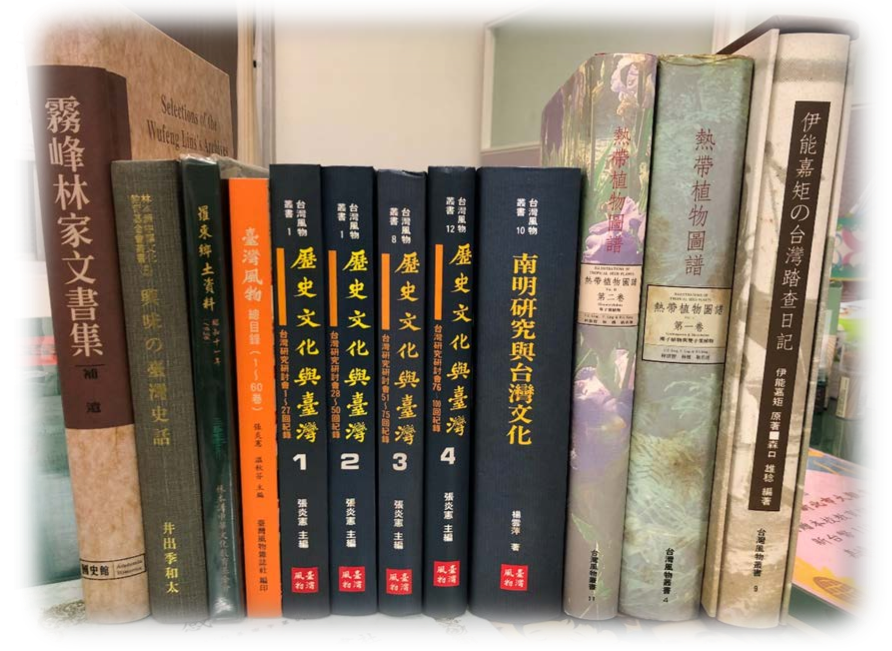 台灣歷史上的八七水災
台灣歷史上的八七水災
The Floods of 1959
戴寶村 /Tai Pao-Tsun
(中央大學歷史研究所教授)
(Professor, Central University Graduate School of History)
2001-08-06
 Houses were destroyed
Houses were destroyed
從歷史的脈絡來看,台灣不是『寶島』而是『災難之島』,命運多舛與其所居位置有關。台灣的地理位置特殊,常飽受『人禍』與『天災』的威脅,由於坐落於西太平洋極重要的經濟、戰略以及交通樞紐的地位,使之成為列強覬覦的目標,因此在歷史上,台灣的統治者經常更替;同時居於環太平洋火山地震帶及颱風經常過往的位置,更使台灣不時遭受老天爺無情的摧殘。1999年的921大地震造成重大傷亡,民眾記憶猶新;歷年颱風所造成的『作大水』(水災)毀屋斷樹、奪走人命。本週「台灣歷史之窗」特別邀請中央大學歷史研究所戴寶村教授執筆,由四十餘年前的一場大水災談起,述說台灣人民與政府面對這場災難時,為保護與維繫家園所做的種種努力。
From a historical context, Taiwan is more of a “Natural Disaster Island” than an “Ilha Formosa.” There have been many disasters over the years resulting from its geographical location. Taiwan has a very special geographical position, and is often threatened by both man-made and natural disasters, thanks to its location at the hub of major trade, strategy and communications in the western Pacific, which makes it an attractive target for the world’s great powers. For these reasons, the rulers of Taiwan been frequently replaced in history; at the same time, its location on the circum-Pacific seismic belt, frequently visited by typhoons, means that Taiwan is often treated mercilessly by the forces of nature. The 9-21 earthquake of 1999, still fresh in people’s minds, inflicted serious casualties; and over the years, floods created by typhoons have destroyed homes and natural vegetation, and taken human life. This week’s Window on Taiwan is written by Professor Tai Pao-Tsun of Central University’s Graduate School of History. He writes of floods which occurred over 40 years ago, and recounts how the people and government of Taiwan worked to safeguard their homes in the face of this natural disaster.
台灣戰後僅次於九二一大地震的災難
台灣現代史上最嚴重的八七水災發生於1959年8月7日,日本南方海面的艾倫颱風把東沙島附近的熱帶低壓引進臺灣,使得中南部豪雨成災。專家研判造成重大災情的原因一方面與連續不斷的豪大雨、台灣本身的地形地質先天不良有密切的關係,另一方面則是當時的訊息流通管道不足、缺乏環境保護及防災觀念,因而使得災況更為慘重。八七水災所造成災情的範圍相當廣泛,遍佈台灣十三個縣市,尤其以苗栗、台中、南投、彰化、雲林、嘉義等六縣及台中市受災最為嚴重,當時人口數約佔台灣總人口數的38%,為台灣的主要農業區域。暴雨集中在8月7至9日三天,所及區域幾乎包含台灣整個西部,而以7日的降雨量最多。據學者指出此次日雨量超過500公釐者達15處之多,主要的暴雨中心集中在苗栗、豐原、芬園、烏溪上游、斗六與阿里山等處。
Second only to the 9-21 disaster in post-war Taiwan
The most serious floods to hit Taiwan in modern times occurred on August 7, 1959. Typhoon Ellen formed in the seas south of Japan, and brought a tropical depression from around the Pratas Islands to Taiwan, causing torrential rains in south and central Taiwan which then created flooding. Experts concluded that the factors that created such a massive disaster were on the one hand intimately connected with the continuous torrential downpours, and Taiwan’s unfortunate natural landforms and geology, and on the other, with the insufficient communications networks and channels of the time, and the paucity of environmental protection and disaster prevention concepts. As a result, the aftermath of the disaster was particularly grisly. The flood area of the August 7 floods was fairly extensive, covering 13 Taiwanese counties and cities, and the six counties of Miaoli, Taichung, Nantou, Changhua, Yunlin and Chiayi, and Taichung City in particular were severely affected. Back then, this area contained 38% of the entire population, and was Taiwan’s major agricultural region. Rainstorms raged for three days, from August 7 to August 9, covering almost the entire western region, with the heaviest rainfall coming on the 7th. Scholars show that there were 15 places where the rainfall on that day exceeded 500 millimeters, and the storms were centered in Miaoli, Fengyuan, Fenyuan, the upper reaches of the Wu River, Touliu and Alishan.
 A road completely destroyed
A road completely destroyed
這場突如其來的災害共造成667人死亡、408人失蹤、942人受傷,各地哀鴻遍野,災民經政府予以收容者竟高達30萬人以上,是台灣戰後僅次於九二一大地震最嚴重的災情。在房屋受災方面,房屋全倒共計有27466間,半倒者18303間。農、林、漁、牧業均損失慘重,光是農地損失其總面積便高達136,542公頃。在交通方面,鐵、公路嚴重癱瘓,鐵路受災297處,而公路更高達476處之多。而在電信與電力方面,其所帶來的大停電及通訊中斷更是可想而知。公共設施如學校、衛生所、醫院等也均遭波及。據官方統計,損失高達三十五億元以上,約佔當時國民所得的11%,對當時的台灣造成嚴重的打擊。
This sudden, unexpected disaster claimed 667 lives. Another 408 people went missing, 942 people were injured, and there was widespread suffering and unhappiness. All in all, over 300,000 disaster victims were given temporary accommodation by the government. The disaster was second in severity only to the 9-21 earthquake in Taiwan’s post-war period. The eventual figure for homes destroyed by the disaster was 27,466, and another 18,303 homes were partially destroyed. Farming, forestry and fishing all suffered heavy setbacks, and a total of 136,542 hectares of farmland alone were destroyed. Railways and roads were severely paralyzed. The railways were struck in 297 different places, and roads in 476. One can well imagine the power cuts and communications breakdowns that disrupted telecommunications and electricity. Public facilities such as schools, public sanitation facilities and hospitals were all disrupted. According to official statistics, over NT$3.5 billion of losses were incurred, 11% of the national income at the time, which was a grave blow to Taiwan.
台灣人集體的受難記憶 攤開當時的報紙,可以更進一步的感受到受災者的心情。最常看到的是暴雨淹沒家園、親友被淹死的悲痛描述,「在水中站在屋頂上的人只能眼睜睜地看著大水沖倒房子」、「左鄰右舍六戶十一人僅我一人漂流得救,因此撰寫此文,以致哀痛」。死傷者是可憐的,可是活著的親人更是不能自己,為了在災區的家人,即使各道路中斷,也要想盡辦法、跋山涉水,親眼見到一面,只是「幾家安慰、幾家愁」,這是全臺灣人的受難記憶。
Taiwan’s collective memory of the disaster Open a newspaper of the time, and you can feel the mood of the disaster victims even more clearly. The most common sight is homes flooded by the storms, descriptions of the pain of seeing relatives and friends drowned, “People standing on the rooftops of their submerged houses can only look on helplessly as the waters rise,” “Of the six houses and 11 people here, only I was rescued from the waters, so I’m writing this, and it sorrows me deeply.” The dead were to be pitied, but the relations that survived were even more helpless, and in order to reach their family in the disaster areas, even though all the roads were impassable, they tried their utmost to find a way to get to them, and see with their own eyes that there were only “a handful of households to be comforted, a few households to worry about.” It’s the recollection of the disaster by people from all over Taiwan.
 Urgent road rebuilding
Urgent road rebuilding
救災工作之進行與救濟辦法之擬定
由於大雨仍持續狂瀉,交通、電信中斷,使得救災工作進行得十分艱辛,然而龐大的災民救濟與安頓及災後衛生與復建等問題均是政府刻不容緩的任務。因此政府除動員龐大國軍參與救災工作外,也依據〈國民義務勞動法〉投入上百萬的民眾參與救災及重建工作,同時成立臨時收容所,而收容所除包含公共處所外,地勢較高的學校,甚至如當時的台中菸廠,也被作為臨時收容災民的地方。
Due to the continuous violent flow of rain, transport
and communications were disrupted, making disaster relief work extremely difficult to carry out. Nevertheless the government immediately set to work arranging relief for disaster victims, and sanitation repairs and rebuilding work. So apart from mobilizing large numbers of troops to participate in the disaster relief work, the government also added over a million volunteers from the general public in accordance with the National Voluntary Labor Law to help with disaster relief and reconstruction work. At the same time, temporary shelters were set up, which offered not only accommodations but also schools on higher, non-flooded land. Even places such as the Taichung Tobacco Factory were used as temporary accommodation for the disaster victims.
另一方面,省府依據〈台灣省人民因災死傷及住屋倒塌救濟辦法〉撥發救濟金給災民。死亡者每人發給1000元、失蹤者700元、重傷者500元、住屋全倒者每戶400元、半倒者每戶200元。當時的友邦美國則提供近千萬新台幣予以協助,除200萬元用於災區醫療衛生外,其餘轉發災民,其撥發標準,為省府撥發金額的半數,並提供救濟物資『麵粉』,規定十歲以上的災民每人可領兩袋,未滿十歲每人一袋(每袋22公斤),由於『體貼』的考慮到台灣人吃不慣麵食,以及怕國人因此將救濟物資轉賣,而將原來的麵粉半數改發食米。島內各界及海外僑胞均捐贈賑災物資,紛紛湧向災區希望能協助災民重建,不僅發揮了人溺己溺的人性關懷,而且透過此次受難經驗,更積極的凝聚了為家園奮鬥的重生力量。
On the other hand, the provincial government used the Taiwan Province Measures to Aid Families who have Suffered Deaths and Loss of their Homes as a Result of the Disaster to allot relief funds to the disaster victims. NT$1000 was given for a death, NT$700 for a missing person, NT$500 for injury, NT$400 to each household where the dwelling had been completely destroyed, NT$200 for a half-destroyed dwelling. The U.S., at that time still a diplomatic ally, provided nearly NT$10 million in aid, and apart from NT$2 million which was used for medical treatment and sanitation works in the disaster areas, the rest of the money was turned over to the disaster victims. The provincial government handed over half of the money, and also provided wheat flour relief goods. The rules were that each disaster victim over the age of 10 years could have 2 sacks of flour, while those under 10 years got one sack (each sack weighed 22 kilos). Although this gift of flour was kind and thoughtful, back in those days, people Taiwan weren’t used to cooking with wheat flour, and as the government feared that people would just re-sell these relief goods, half of the flour was replaced with rice. People all over Taiwan, as well as many Taiwanese living overseas, donated goods for the disaster-stricken, and these poured into the disaster areas, as people expressed their wishes to help the disaster victims rebuild. It was more than just human compassion for the dead, the fact that the country had gone through this experience together further strengthened and resolved the fight for the country.
 Restoring public sanitation works
Restoring public sanitation works
由於天災受害面積廣泛且嚴重,政府依據〈動員戡亂時期臨時條款〉規定頒佈〈總統緊急處分令〉。依照此法令,得以增減預算、限制國民消費、開增稅捐及發行儲蓄卷等,另外,對於與救災復健有關事宜,也可便宜行事。在開增稅捐方面,附增『水災復興建設捐』、營利事業所得稅附加15%、綜合所得稅附加30%、屠宰稅附加30%、娛樂稅以台北、台中、台南、基隆、高雄等五縣市電影票為限,每張戲票加1至2元、宴席稅附加30%、地價稅與田賦皆附加40%,房屋、證照、貨物稅等亦附加30%,而公有及私用小客車、電費、電話費、鐵公路票價亦一併附加『水災復興建設捐』。在發行儲蓄卷方面,『八七災區復興建設有獎儲蓄卷』由台灣銀行發行,前後共十二期。每張的面額10元,每期開獎,特獎獎金高達40萬元,借此募集資金。
Because of the severity of this disaster, and the wide area it covered, the government used the Temporary Provisions Effective During the Period of Communist Rebellion to promulgate the President’s Emergency Disciplinary Action Order. In accordance with this law, tasks such as increasing or decreasing the budget, limiting national expenditure, levying taxes and selling savings bonds, etc., and also arrangements to do with post-disaster reconstruction, could be handled inexpensively. Where levying taxes was concerned, a “flood reconstruction tax donation” of 15% was added onto business tax, 30% was added to general income tax, 30% was added to animal slaughtering tax, and entertainment tax in the five cities of Taipei, Taichung, Tainan, Keelung, and Kaohsiung was limited to cinema tickets, where each ticket price was increased from NT$1 to NT$2. Restaurant tax was increased by 30%, land value tax and agricultural land tax were both increased by 40%, property, securities and commodities tax were all increased by 30%, and both public and private buses, electricity rates, telephone rates and railway tickets had a “flood reconstruction tax donation” added. The Bank of Taiwan put on sale “August 7 Disaster Area Reconstruction Prize Draw Savings Bonds” for a period of 12 weeks following the disaster. The bonds were sold in denominations of NT$10, and each week there was a prize draw, with a top prize of NT$400,000, and in this way funds were raised.
由災難中粹練出的意志與相互扶持的認同感
四十幾年過去了,台灣似乎逐漸走出八七水災的陰影。但是這四十年之中,台灣不斷地在新的災難下,救災與重建。動員龐大人力物力投入救災行列,覓集一切資源從事復建工作,喚回不了一條條寶貴的生命。災害來臨之後的復甦,遠比不上災害來臨前的預防。多災多難的台灣,我們擁有太多的慘痛經驗、借鏡及教訓,如果還不能亡羊補牢,將一次次的災難化險為夷,那麼再多的災難記憶,也無濟於事。台灣,在災難中粹煉人們相互扶持的認同感,讓大家一起同舟共濟,共同維繫及珍惜我們的家園。
The mutual support and feelings of identification which emerged from this disaster
Over 40 years have passed, and Taiwan seems to have come out of the shadow of the August 7 floods. But in these forty-odd years, Taiwan has continually found itself amid new natural disasters, and related relief efforts and reconstruction. Vast legions of volunteers have been mobilized for relief efforts, and resources have been marshaled for reconstruction work, but human lives, once lost, cannot be brought back. Recovery following disasters is nothing like as good as prevention carried out before disaster strikes. We in Taiwan have suffered so many disasters, and we’ve gone through too much bitter suffering. We need to learn from past experience, and while we cannot close the stable door after the horse has bolted, if we cannot learn to head off disasters, then all these memories of past disasters are of no help at all. From these disasters come mutual support and feelings of identification. Let us realize that we are all in the same boat, and let’s take care of our country together.
Edited by Tina Lee/ translated by Elizabeth Hoile
李美儀編輯/何麗薩翻譯









